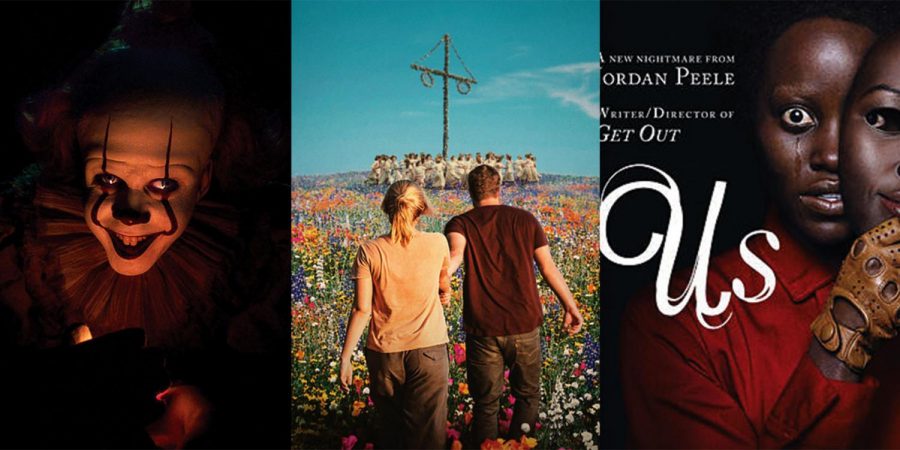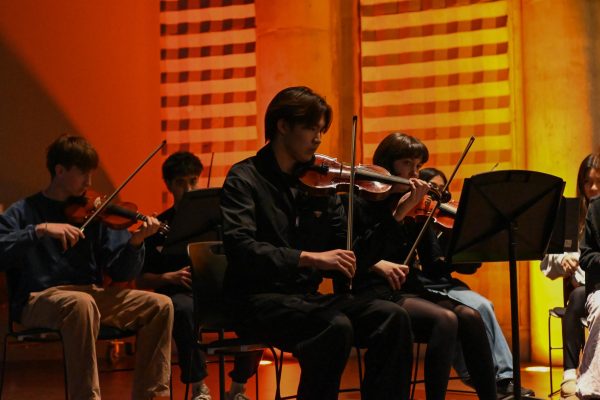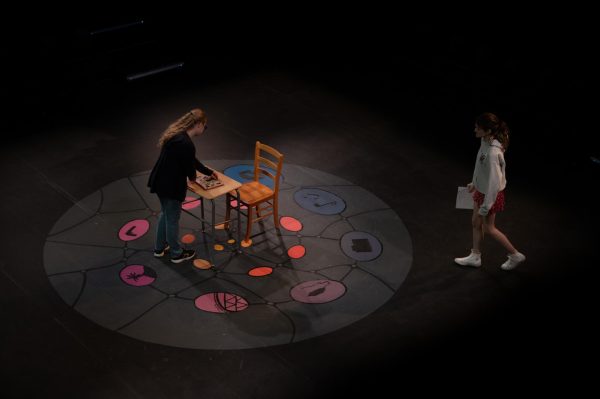Looking for a scare? Try some of these
It’s spooky season! Get in the spirit of things with these three 2019 horror movies: a classic clown thriller, an artistic social think piece and a sunny yet terrifying Swedish cult-classic
‘It: Chapter 2’ provides fun, silly scares to see with friends
While not particularly scary, “It: Chapter 2” is a horror film for those wanting a lighter, more adventure-oriented experience. It is still great fun to watch, especially with friends.
The greatest strength of “It: Chapter 2” is how it presents its message. The main theme of the movie is the struggle to overcome trauma. The monster, known as “It,” feeds off of fear and trauma in its victims, and each of the main characters has a past that “It” can target. In the first film, the characters forced the monster into hibernation, partially overcoming their fears, but by the opening of the second film, most of the now grown-up protagonists have reverted unconsciously to their old neuroses. The arcs they undergo to once and for all overcome their fears and trauma is the best part of the movie.
Despite dealing with a number of very dark themes, “It: Chapter 2” is not a true horror film. It’s really action-adventure, with light horror elements. The monster is more often funny than terrifying, especially when it takes the form of a Paul Bunyan statue or a giant clown with crab legs.
Another thing that dampens the horror is its repetition. Nearly every scene in the second act sees someone going into a scary-looking place alone, and then getting jumpscared. Worse, the jumpscare usually destroys the tension because of how silly it looks.
Nevertheless, “It: Chapter 2” is still a great and enjoyable ride. While more rollercoaster than haunted house, it’s still a pretty good rollercoaster.
‘Us’ is confusing, scary and certainly worth watching
A beautifully horrific movie, “Us” is a real work of art. While criticized for its convoluted plot and confusing climactic twist, the film is still very well done and a good scare to boot.
“Us” follows a modern family forced into confrontation with “the Tethered,” dark and twisted doppelgangers who attempt to kill and replace the family. Meanwhile other “Tethered” are doing the same across the United States, and the family’s mother hides a dark secret of her own.
The first act of the film is the best, a brilliant portrayal of seemingly cushy modern life hiding a sinister undertone. Jordan Peele, director of both “Us” and 2017’s “Get Out,” shows a careful attention to the detail in his scenes and the humanity of his characters. There are things one can only appreciate on a second viewing.
The majority of the second act, a tense and drawn-out conflict between the family and their doubles, is also very good and very scary. The characters feel vulnerable and each victory feels hard-won.
Unfortunately, the plot kind of goes off a cliff near the end. The origin and plan of “The Tethered” is confusing and very odd, and somewhat breaks the tension, but it is saved by that same brilliance of atmosphere that carried the rest of the film.
“Us” is a flawed masterpiece. It demands both a high suspension of disbelief and a careful eye for detail in viewers, but its thrilling scares make it ultimately well worth meeting on its own terms.
A ‘Midsommar’ nightmare; a brutal take on relationships
This movie is not for the faint of heart. “Midsommar,” shot in bright, brilliant midsummer sunlight, the dark psychological horror is sure to leave you scarred.
The film centers around a group of Americans who are introduced to a Swedish cult during their midsummer celebration that happens once every 90 years. The characters are slowly drawn deeper into the cult’s practices until there is no escape.
Director Ari Aster shows here his willingness to tease out the truly horrifying through extremely careful pacing, ramping up the horror from unsettling to disturbing. “Midsommar” has no jump scares, and most scenes proceed very slowly, allowing the tension to build even when the viewer does not know what it is building to. Aster is a master of planting story elements and making believable characters, such that every twist feels inevitable, the final nudge causing a perfect domino fall of consequence. I left the film stunned but not confused, heartbroken but not angry.
Occasionally, however, “Midsommar” drops the ball on its message, largely from trying to be too much at once. There is an early scene in which, according to tradition, two cult members kill themselves at the age of 72. This is both set up as a horrifying moment and made to make the viewer question their views on death and aging. The film doesn’t carry this theme, though.
All in all, however, “Midsommar” is definitely worth a watch, especially if you watch it in the dark — or the midday sun.

























































